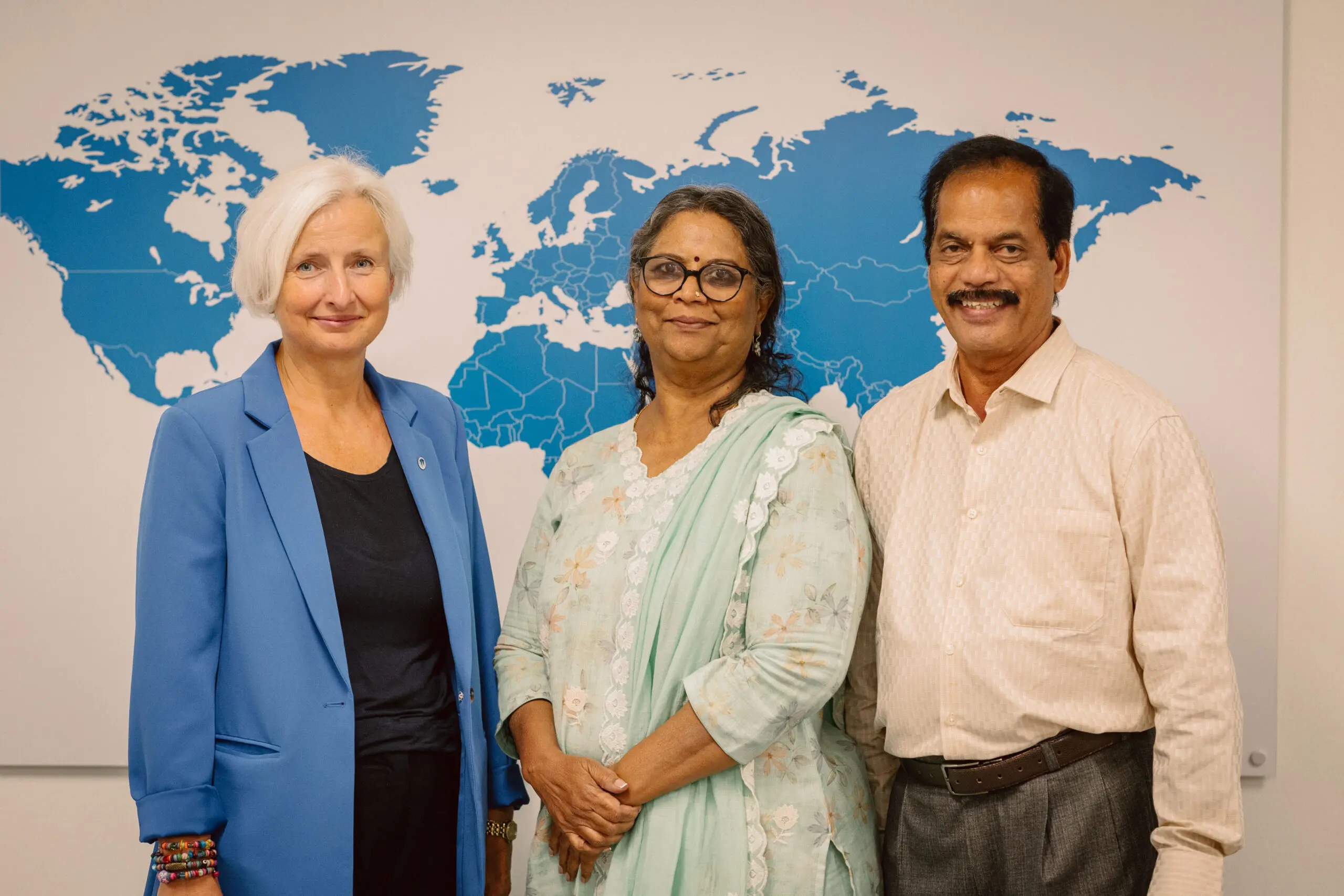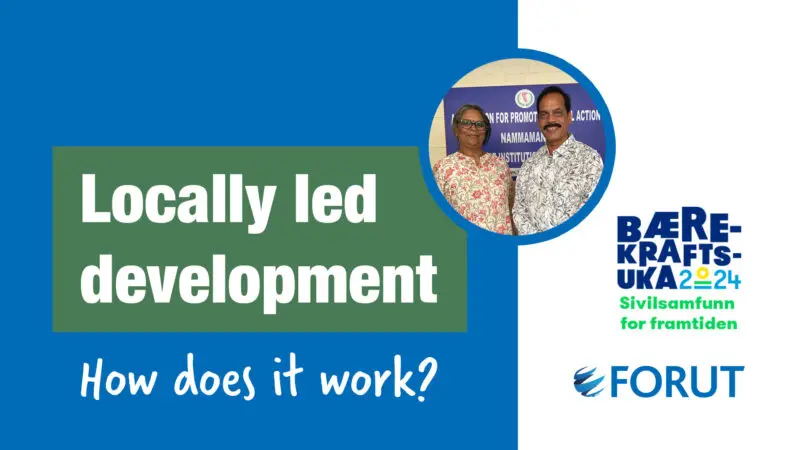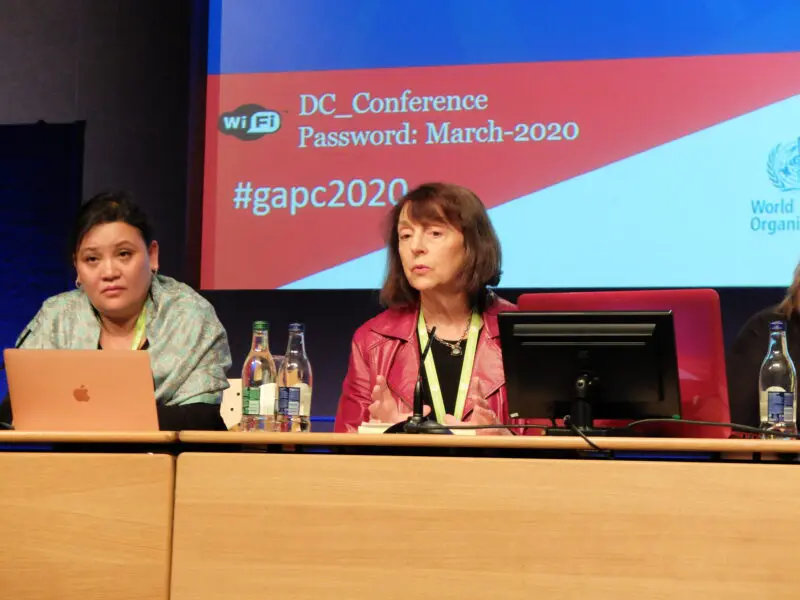It’s easy to end up in the ditch if it’s unclear who should have their hands on the wheel.
By Lakshapathi Pendyala, founder director APSA and Sheila Devaraj, Director APSA, and Ida Oleanna Hagen, Secretary General at FORUT. This text was first published in Norwegian in Transit Magasin.
Development cooperation between partners in the north and south is about embarking on a long journey together. Before we get into the car, we agree on where we are going. We know that the road there is unclear and difficult, and sometimes dangerous. But we agree that it is the partner from the south, who knows the roads and terrain best, who must sit in the driver’s seat.
The partner from the north can sit in the passenger seat, but must resist the temptation to lean over and grab the wheel from time to time, for then we end up in the ditch. There should be two hands on the wheel, and both should be the driver’s.
Locally Led Development for 40 Years
Locally led development engages many. Different perspectives give us an ever-growing picture of how complex this topic is, most recently after the presentation of the new humanitarian strategy by the Norwegian Government.
We, the authors of this article, can look back on a partnership between two civil society organisastions in Norway and India over 40 years. We collaborate to make children safer – mostly through long-term development work, but we have also experienced the value of the partnership in humanitarian response. Regardless, we think it is time for some voices from those who lead locally in the global south.
The introduction is just a metaphor, but it is suitable to illustrate an experience that we believe many southern partners have had with partners from the north. When northern partners have felt that they must have a tight grip on the wheel – in the form of extensive agreement apparatus, detailed result frameworks, or very intrusive and directive follow-up – the best path is not always chosen. And sometimes you might also end up in the ditch.
This does not mean that the northern partner must relinquish authority and responsibility for the results to be achieved. On the contrary, an equal partnership will involve a shared responsibility, based on respect for each other’s particular expertise and conditions, a willingness to learn from each other, an acceptance of differences and different roles, and a fundamental reciprocity in the relationship we have with each other.
APSA India and FORUT have found that this takes time. And that we have learned – and continue to learn – from each other. APSA’s knowledge and approach to children’s and women’s rights have contributed in the shaping of FORUT’s policy in the area, while substance abuse and mental health as obstacles to development have gained greater prominence in APSA’s work as a result of FORUT’s initiative.
The Partnership Seen from the South
APSA works in a network-based manner with local organizations that together cover 50,000 families in 100 slum areas in Bangalore and Hyderabad. The organisation collaborates closely with local authorities in education, child protection, and vocational training, and participates in several committees nationally and at the state level on child protection.
Over these four decades, APSA has had between 50 and 60 financial donors.
Unlike many other donors, FORUT has never insisted that APSA must follow a very specific recipe for the effort, or that the organization should be a spokesperson for a very narrow agenda. FORUT has only defined the thematic areas, and then we have agreed on the main goals we will work towards. This has given the necessary freedom to choose the path to the goal, to seize opportunities that arise, and to use resources in the most effective way.
Furthermore, FORUT has spent a lot of time with APSA to build knowledge about strategic planning, result management tools, case studies, and reporting. Particularly the latter, APSA would like to highlight, as the use of cases in planning and reporting processes has been important for organizational reflection and learning.
That FORUT has been a stable and consistent partner for so many years has been crucial for APSA to build a recognized model for child protection in India and increase marginalized people’s participation in the local community.
The Partnership Seen from the North
FORUT was founded in the early 80s to continue the boat-building project Cey-Nor in Sri Lanka. The meeting with APSA at a seminar in Birmingham in 1984 had a decisive impact. The partnership with APSA became a model for how FORUT entered into contracts with new partners, with equality and respect for the partners’ ability to make the best strategic and operational decisions based on their own understanding of the local context. Today, FORUT has 17 partners in the new framework agreement with Norad. These are organizations with good results and strong roots in their own community.
Development Minister Tvinnereim wrote in an article in May this year that the Norwegian civil society has an added value as a partner for its sister organizations. We believe this is correct. We facilitate learning not only between us and the partners but also directly between southern partners, all the time.
FORUT thus becomes a hub for experience sharing and knowledge building – also about all the dilemmas such a partnership model represents. For there are many dilemmas.
Bottom-Up
One of these dilemmas is that locally led development is in a permanent tension with the expectation of stringent and simple goal management from the northern partner’s side, where measures and results from a number of different southern partners must be gathered in an overarching result framework.
When this is to reflect the northern partner’s profile and cover their need for a unified and logically consistent goal hierarchy, it will usually be necessary to peel away local priorities and solutions that the individual southern partners consider more relevant to their own specific context.
The results will often be significantly better when the southern partners have greater definitional power, as with their political and operational situational understanding, they will have a better view of how the opportunity space actually looks, and where there are realistic opportunities to influence and make a significant difference.
Locally led development means that goal hierarchies must be built more from the bottom up, and it is significantly more demanding than building them from the top down. In practice, there are no solutions that are both simple and good at the same time, and we must seek compromises between considerations from the north and the south.
The northern partner must, however, do their utmost to give the southern partners as much room for maneuver as possible, among other things by following up on overarching goals rather than details, and by resisting the temptation to grab the wheel themselves.
As a “back donor,” Norad must necessarily represent a number of expectations and requirements from the north, and some of these will harmonize less well with the ideal of locally led development. As a northern partner, FORUT must enforce these towards the southern partner APSA, but in such a way that APSA is given as much room as possible to follow their own priorities and make their own choices.
Trust and Clear Requirements
APSA and FORUT have, since the beginning, wanted to realize the ideal of equal and fair partnerships. The key has been trust, and the experience is that trust is built through clear requirements, honest feedback, predictability, a genuine desire to understand each other’s standpoint, and – above all – a willingness to learn from each other.
This takes time. We have spent several decades developing the trusting partnership we have today, where there is actually room for a development effort that is locally led.
Every day we must ensure that we do not end up in the ditch, either on one side or the other. For the ditches are there, but it is APSA who knows the road best and has both hands on the wheel. Therefore, it makes sense to shift power and decision-making authority to partner organizations in the south.






